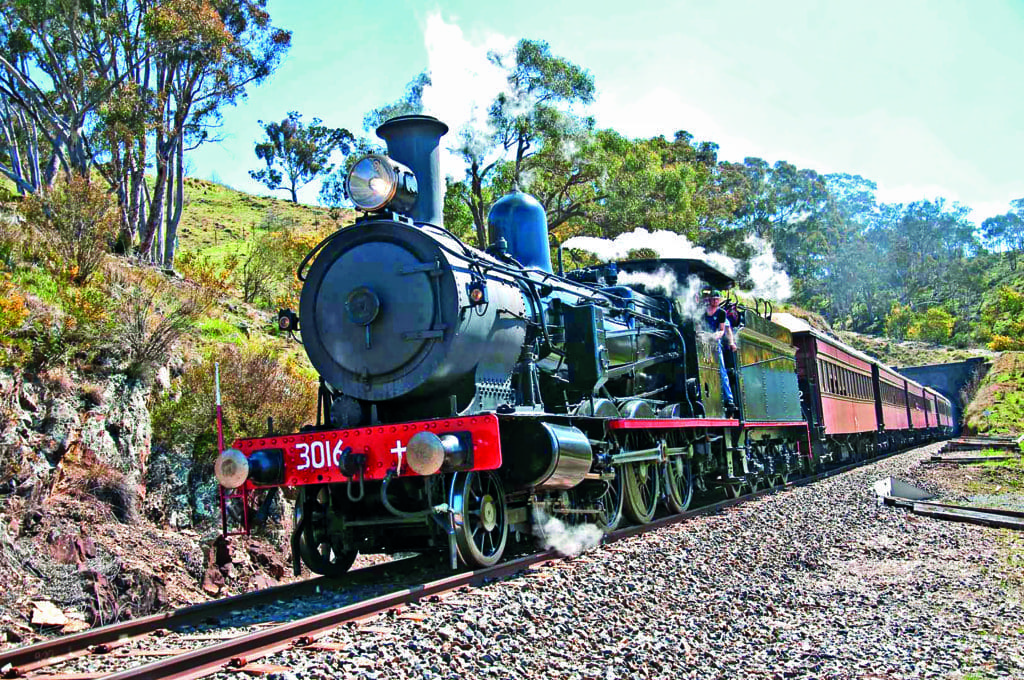One of Australia’s leading railway museums, which was for many years home to a number of British-built steam locomotives including one of the world’s largest operational preserved engines, has been saved nearly two years after its dramatic and unexpected closure.

Canberra Railway Museum closed in November 2016 following the financial collapse of the ACT division of the Australian Railway Historical Society, which ran the museum. As volunteers, preservationists and enthusiasts reeled from the sudden closure, two of the society’s prized Beyer Peacock-built assets, Garratt 4-8-4+4-8-4 No. 6029 and 4-6-0 No. 3016, were hurriedly relocated by officials to another railway museum 150 miles away.
Enjoy more Heritage Railway reading in the four-weekly magazine.
Click here to subscribe & save.
Amid reports that it had debts of at least £425,000, the society was placed in provisional liquidation and global accountancy firm Deloitte was appointed administrator to oversee affairs, with its first move being the transfer of the two engines. In August last year the firm held a controversial auction on site, despite attempts by enthusiasts to halt proceedings, and nearly £250,000 after costs was raised to be used to help settle creditor claims and other liabilities.
Among the assets sold were 4-6-4T No. 3013 and 4-6-0 No. 3102, built for New South Wales Government Railways by Beyer Peacock of Manchester in 1903 and 1912 respectively, an 1800hp Co-Co diesel, a 35 ton steam crane built by Ransomes & Rapier of Ipswich in 1915, and a variety of rolling stock including carriages.
The museum’s coveted Garratt No. 6029, which emerged from Beyer Peacock’s works in 1953, was not put under the hammer as Deloitte said it was not for sale, but within weeks of the auction the accountancy firm performed a U-turn and put it on the market.
This caused further angst among the Australian preservation movement, as it was feared the 254 ton giant may end up overseas – a scenario which had echoes of many people’s concerns when our own Flying Scotsman was put up for sale in 2004. However, as with the LNER Pacific, those fears proved unfounded when it was bought last November by enthusiast Phil Davis and businessman David Sommerville.
Desperation turns to joy
With the museum’s assets being sold and its site in Canberra becoming overgrown and a magnet for thieves and graffiti artists, former volunteers despaired that it would never be saved, but their desperation turned to joy in early August when it was revealed that the museum had new owners who planned to reopen it early next year.
The owner is Capital Region Heritage Rail, a newly-registered charity that has been founded to run the museum and operate heritage trains, while additionally a separate holding company, ACT Heritage Rail Holdings, has been established to take over ownership of the museum’s railway assets, ensuring that if the revived museum was to fail, the assets would not be at risk.
‘A bit of work to do’
Work on clearing the run-down museum site has already started, but John Cheeseman, a retired bank manager and long-time museum volunteer who is chairman of Capital Region Heritage Rail, cautioned: “Given the fact that the site has been closed for more than 18 months, we’ve got a bit of work to do before we reopen early next year.”
Another problem is that much of the rolling stock that was sold by Deloitte at the auction a year ago is still on the museum site, and it is understood this includes locomotives and carriages. “If the new owners of this stock don’t collect they will be charged rent,” said John.
“We are not going to be the big multi-million organisation it was, but we’re certainly not going to run up debts either. We’ve got a proper company board in place, so that we’ve got the governance right.”
The museum’s reduced fleet under Capital Region Heritage Rail includes a couple of rail motors, 20 carriages and two steam locomotives – No. 3016, one of the two hurriedly moved away days after the museum closed, and another Beyer Peacock product, No. 1210.
This 4-4-0 was built in Manchester in 1878 for New South Wales Government Railways and in May 1914 worked the first train into Canberra. It had remained in the abandoned museum after the closure nearly two years ago, and last December had priceless parts stolen, including original cab brass and copper fittings.
The museum was handed over to its new owners on September 1, and another landmark event that weekend was Garratt No. 6029 returning to Canberra for the first time since it was moved when the museum closed.
Now based at the NSW Rail Museum in Thirlmere, south-west of Sydney, the mammoth engine was in town to operate a series of shuttles from Canberra station to Queanbeyan, 7½ miles away, and Bungendore, a journey of 18 miles. “NSW Rail Museum did this in partnership with us, and they used our facilities to service the train,” explained John, who added that he expected further cooperation between the two museums in the future.
Advert
 Enjoy more Heritage Railway reading in the four-weekly magazine. Click here to subscribe.
Enjoy more Heritage Railway reading in the four-weekly magazine. Click here to subscribe.




